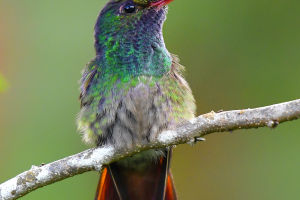
Owls' Head Rotation

Owls have long been revered for their seemingly supernatural ability to rotate their heads to extreme angles, a trait often exaggerated in folklore and popular culture.
Recent research, however, has sought to uncover the truth behind this myth, shedding light on the actual extent of an owl's neck flexibility.
A study published in the Journal of Morphology presents compelling evidence suggesting that owls may indeed possess the capability to rotate their heads a full 360 degrees, challenging conventional beliefs and prompting further investigation into the intricacies of their anatomy and behavior.
Led by Aleksandra Panyutina and Alexander Kuznetsov, independent researchers with a keen interest in avian biomechanics, the study delved deep into the anatomy of owl necks. Their research involved the examination of eight deceased owls from five different species obtained from academic institutions. Utilizing advanced imaging techniques such as computed tomography (CT) scans, the researchers meticulously analyzed the bones, muscles, and ligaments of the owl necks to unravel the mechanisms behind their remarkable flexibility.
Related
 Whale feeding affects the climate of nature as a whole.
Whale feeding affects the climate of nature as a whole.
 Hummingbirds' unique sideways flutter gets them through small apertures.
Hummingbirds' unique sideways flutter gets them through small apertures.
 Crabs have migrated from the ocean to land many times during their evolution.
Crabs have migrated from the ocean to land many times during their evolution.
 Have you ever wondered what giraffes look like when they sleep and where they put their necks when they fall asleep?
Have you ever wondered what giraffes look like when they sleep and where they put their necks when they fall asleep?
 The fascination of cats sleeping in the corner of the bed.
The fascination of cats sleeping in the corner of the bed.
 Everything You Need to Know About Spinner Dolphin.
Everything You Need to Know About Spinner Dolphin.

The findings of the study revealed fascinating insights into how owls achieve their extraordinary range of motion. Contrary to previous assumptions, owls employ not one, but two distinct strategies to rotate their heads. Firstly, they utilize the joints between the bones in their necks, allowing for a rotation of up to 126 degrees. Secondly, they twist their spine in a manner resembling a spiral staircase, further extending their range of motion. Remarkably, this twisting maneuver does not cause damage to the bones, ligaments, or muscles in the owl's neck, even during a complete 360-degree rotation.
Panyutina and Kuznetsov's research suggests that living owls may indeed possess the ability to turn their heads a full 360 degrees. However, skepticism remains among some experts in the field, including Michael Habib from the Natural History Museum of Los Angeles County. While acknowledging the novelty of the study, Habib raises concerns about the potential anatomical limitations that may prevent owls from achieving a complete rotation. He suggests that while there may be no inherent restrictions in the bones or muscles, other anatomical features, such as nerves, could pose challenges.
One significant concern raised by Habib is the potential damage to the nerves in the owl's neck during a 360-degree rotation, which could impair the owl's ability to fly, as the nerves would need time to heal. Panyutina, however, remains optimistic, highlighting the adaptability of owls' nerves, particularly the vagus nerve, which she believes can adjust to the twisting deformity of the bones without being stretched.
To resolve the ongoing debate and confirm the true extent of an owl's neck mobility, Panyutina suggests conducting experiments with live owls. By training owls to focus on specific targets and observing their behavior on rotating platforms, researchers may be able to determine whether owls can indeed maintain focus during a complete 360-degree head rotation.
While the debate over whether owls can rotate their heads 360 degrees continues, recent research has provided compelling evidence in support of this extraordinary ability. By unraveling the complexities of owl anatomy and behavior, scientists are uncovering new insights into the fascinating world of avian biomechanics, challenging long-held beliefs, and inspiring further exploration into the capabilities of these enigmatic creatures.